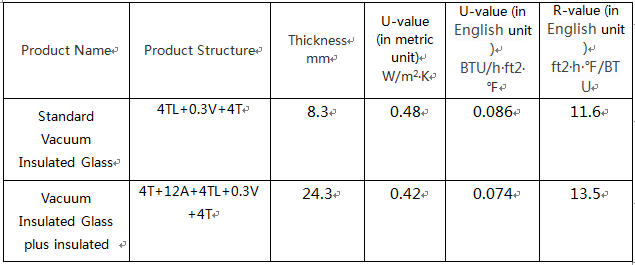With its excellent performance in thermal insulation and noise reduction, vacuum insulated glass has found widespread applications worldwide. In terms of expression for thermal insulation performance, different measuring units are used around the world. For instance, China and Europe use K-value while The U.S. Uses U-value. Some others use R-value. What is the difference between K-value, U-value, and R-value?
K-value is simply shorthand for thermal conductivity, referring to the time rate of steady-state heat flow through a unit area of a homogeneous material induced by a unit temperature gradient in a direction perpendicular to that unit area. While Chinese K-value is measured with GB10294 standard, European K-value is based on EN673 of Europe standard.
U-value, known officially as thermal transmittance, refers to the heat transmission in unit time through the unit area of material construction and the boundary air films, induced by the unit temperature difference between the environments on each side. The lower the U-value, the lower the rate of heat flow for a given set of conditions. A well-insulated building wall system will have a much lower U-value, or thermal transmittance, than an uninsulated or poorly insulated system. U-value of the U.S. is based on American standard ASHRAE. In addition, under American standard ASHRAE, the measuring conditions also differentiate into winter and summer conditions.
Thermal Resistance, or R-value, is used to reflect the ability to resist heat flow by thermal insulating materials. The larger the R-value is, the higher resistance an object has against heat flow, the more suitable it is to be used as thermal insulation material. European and U.S. countries commonly use thermal resistance of glass (R-value) to compare the thermal performance of different glass materials.
Thermal resistance (R-value) is reciprocal of heat transfer coefficient (U-value), i.e.:
U=1/R
or R=1/U
Here below is the U-value and R-value of vacuum insulated glass made by LandGlass

Note: T - Tempered Glass; L - Low-E Coating; V - Vacuum Space; A – Air Spacer





